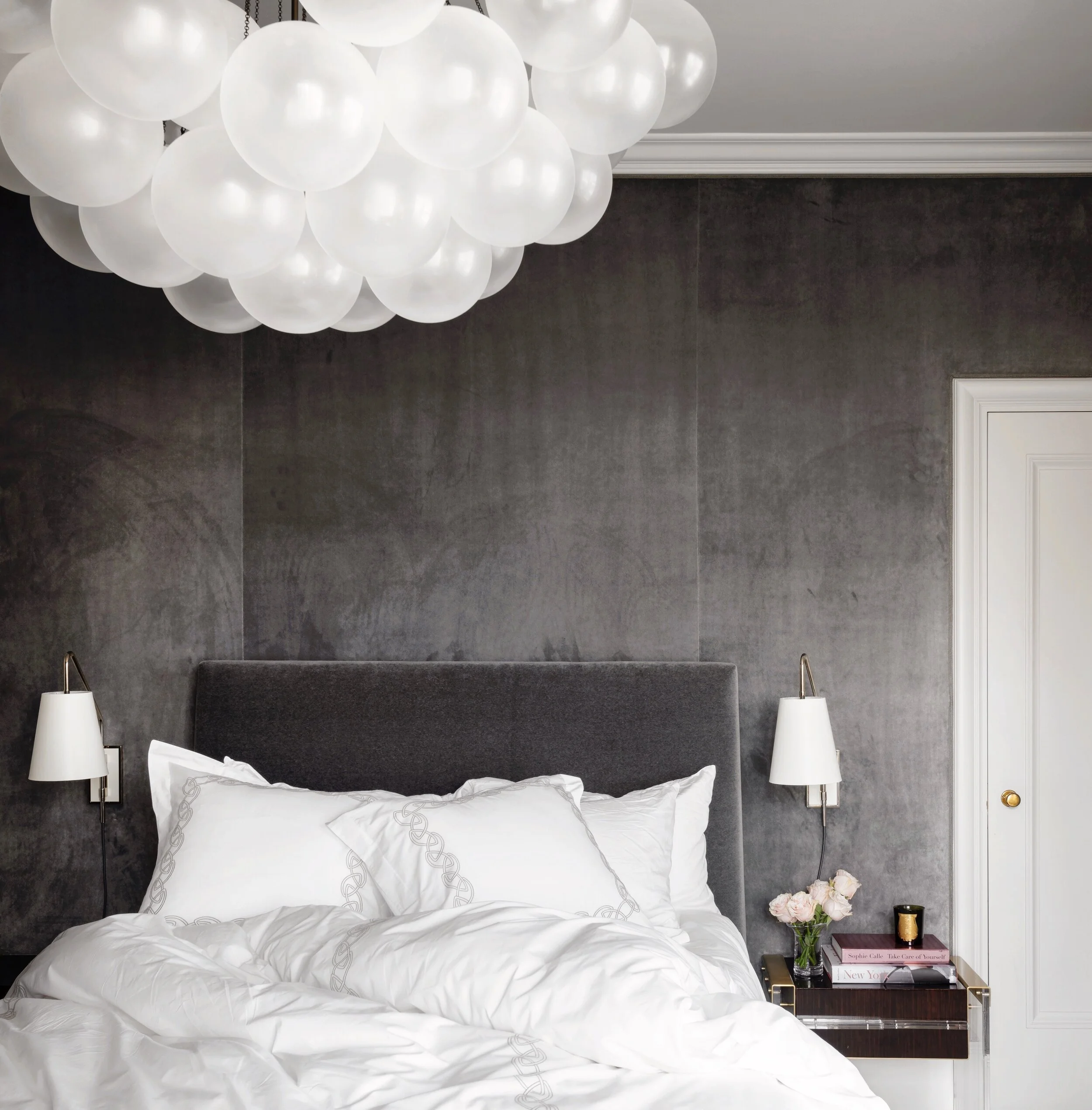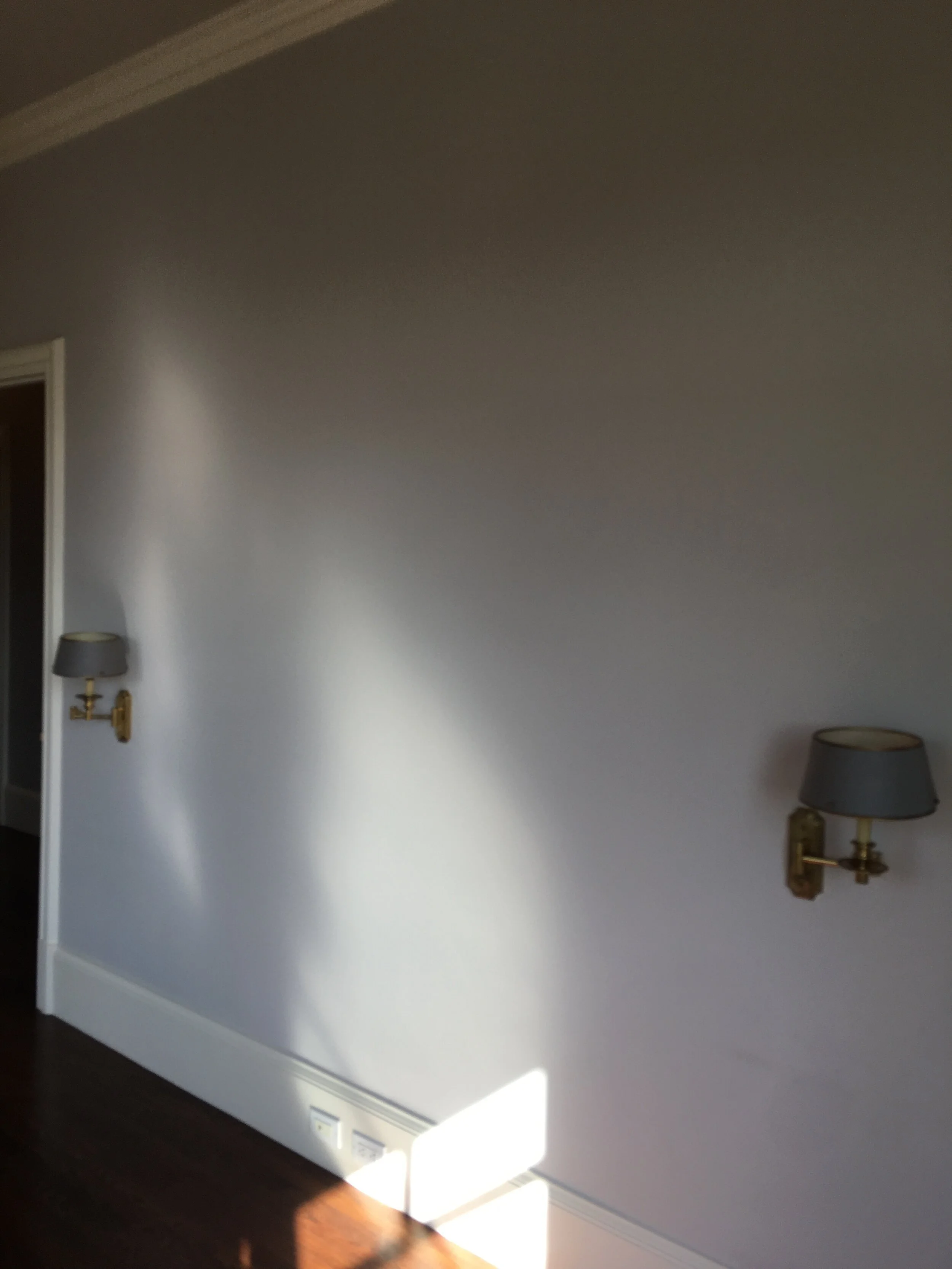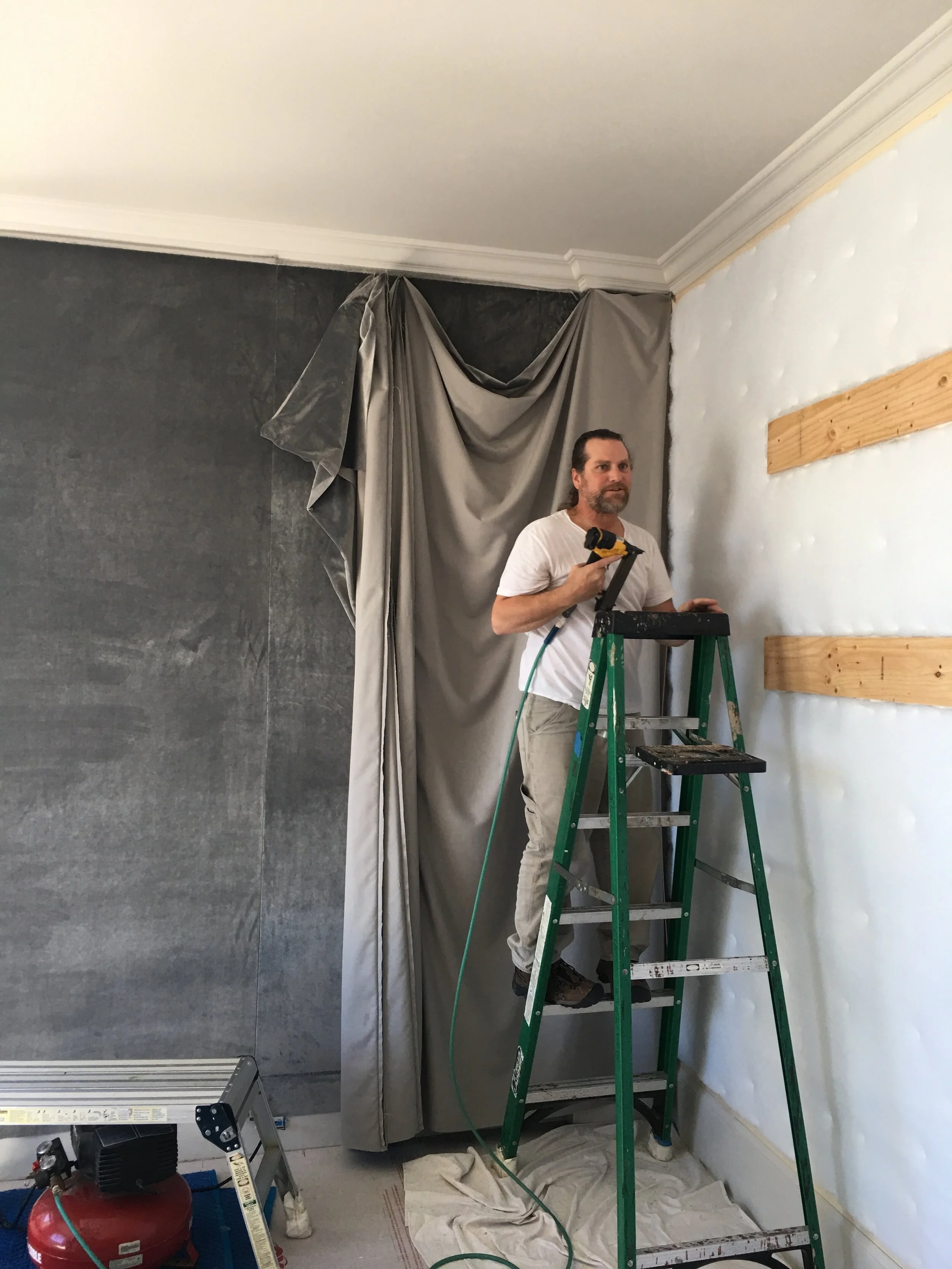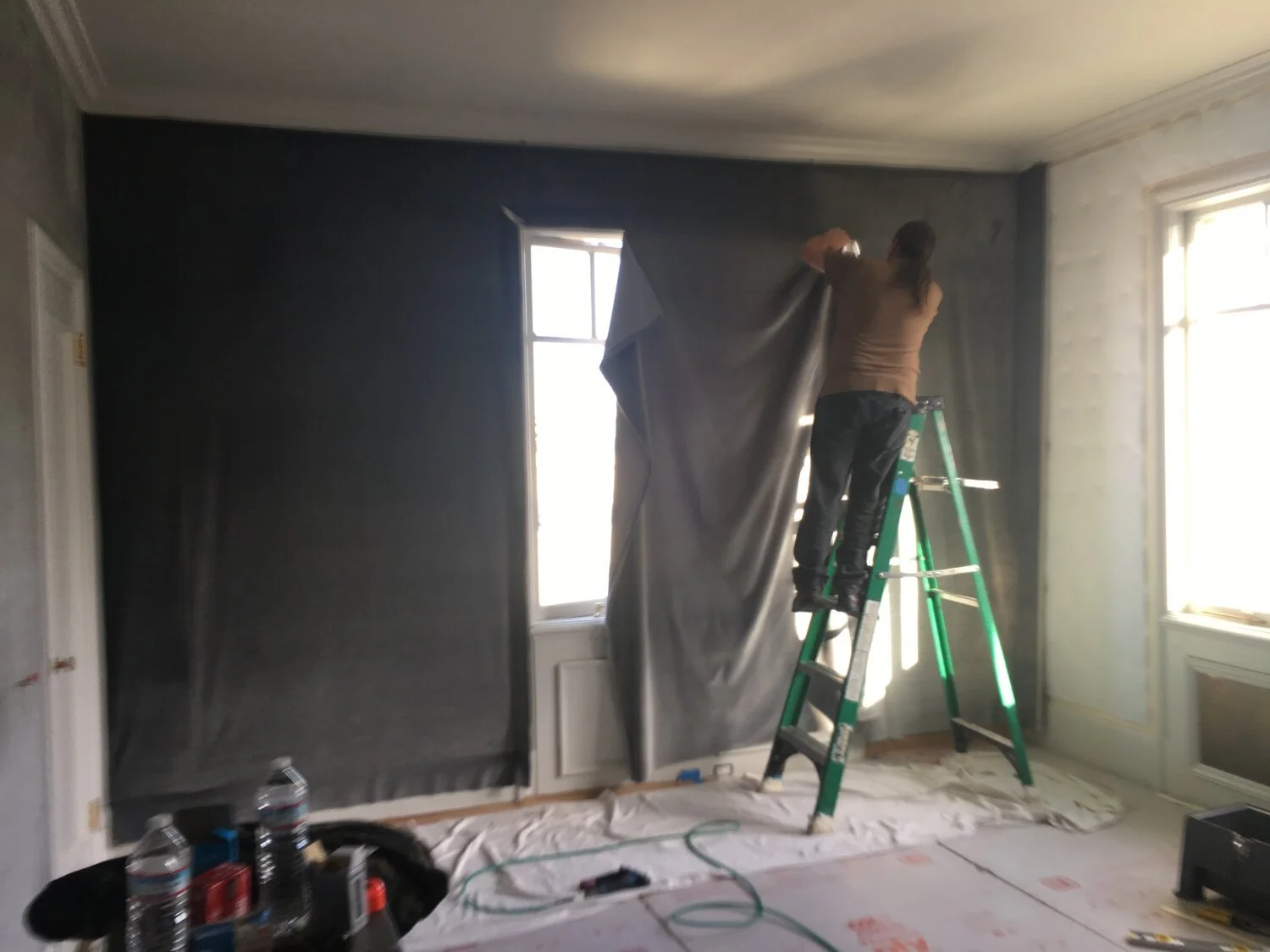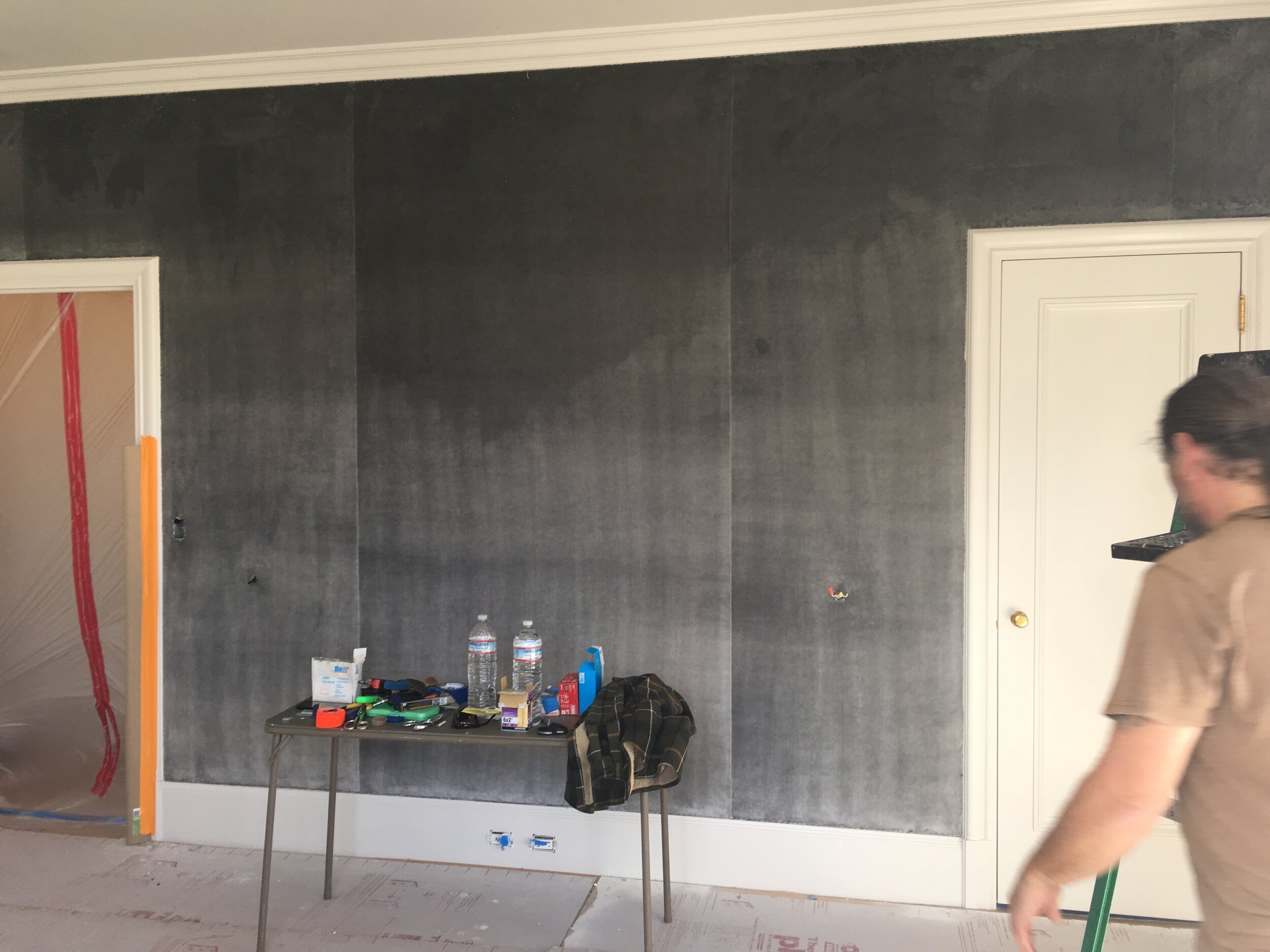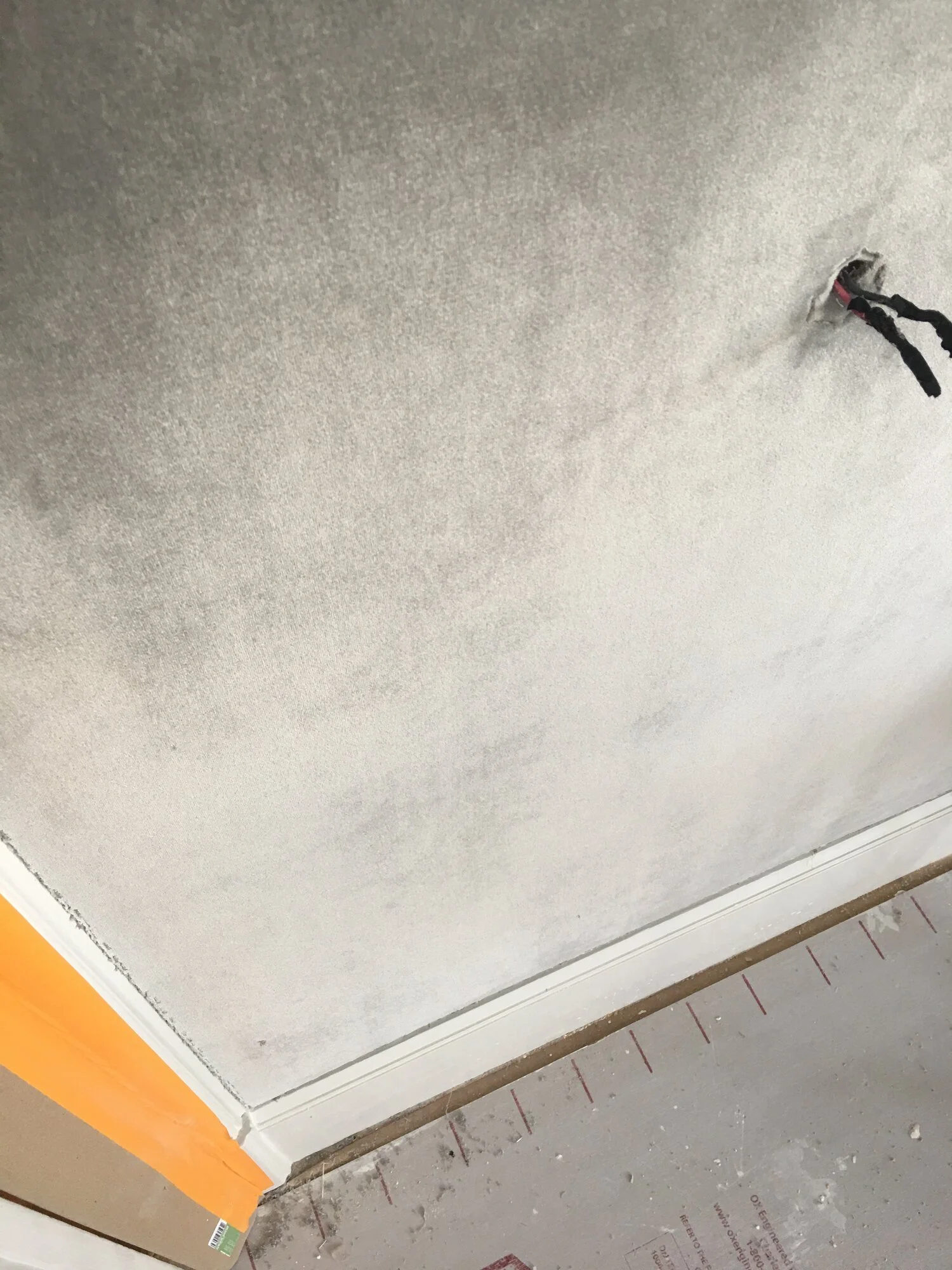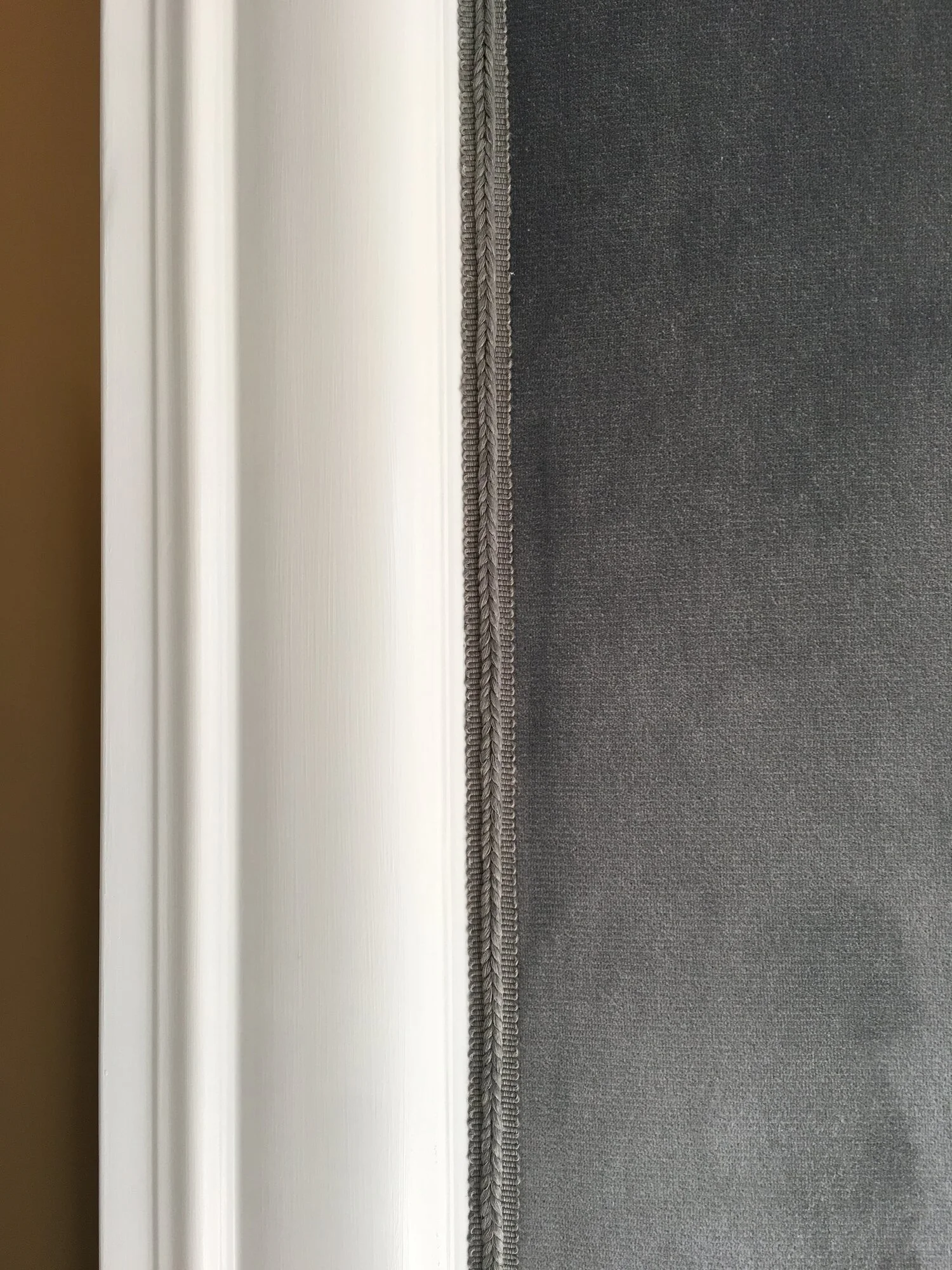Upholstered Walls
photo: Aaron Leitz
One of my favorite things to do, if budget allows, is to upholster walls… Upholstering walls, much like any classic design or architectural technique, harkens its origin back to early days. Hanging tapestries and rugs was one of the first ways in which people would insulate their spaces.
Our ‘before’….
I feel like sometimes we get overwhelmed by ‘The Finished Photo’… as if, it is unattainable, or our spaces could never look like this or that… I love this before picture (above) of the Primary Bedroom as we received it, because there is literally, nothing special about this! Anything is possible!
Our skilled craftsmen installing the material which had been seemed together in measured panels in an off-site workroom.
The fabric is seamed together in panels and brought onsite for installation only after the batting and blocking is installed to the walls. The batting (white cotton stuffing you see on the wall here) is what gives the paneling its depth and fullness. The wood blocking on the wall here is where the artwork that was planned for this space will be hung. IF you are upholstering walls, this is a really important detail to think about… Where will the art be hung? You don’t have to know exactly what art, but if there is a natural spot for art on the walls (existing or future) add the blocking, so that you do not ruin your fabulous upholstered walls!
Trying to install art with hooks or cleats through the batting and upholstery will ruin your walls. Just sayin’.
upholstery being fit snugly around millwork and casings
The layout of your upholstery panels is an important detail to think about from the start. This is our headboard wall, and because this would be a major focal point, it was critical that the panels be centered on the wall.
Also, understand where your electrical will be… The upholstery installation should be your absolute LAST trade in the space…
Here, the wiring for the sconces is pulled through a cut in the panels.
To finish off the Upholstered panels, I chose this Samuel and Sons ‘Flanders Gimp’ in Flint.
In an application like this, it is important to ‘finish’ the edges… because this is a decidedly more modern application of upholstered walls, the gimp trim was color matched to the dark gray silk velvet. It finishes the edges of the panels around all of the doorways and windows, and wraps the room at the base and the crown… it adds a slight note of texture and soft shadow lines, which just add to the depth of the installation.
Details.
Photo: Aaron Leitz
Here, our ‘Finished Photo’… a totally luxurious application of silk velvet provides a deep and sultry backdrop to both modern and traditional furnishings… mixing it up, but ALWAYS layering!

